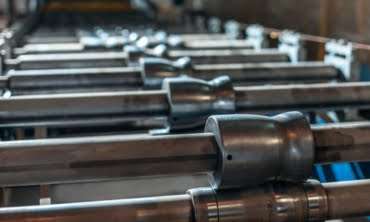Introduction
In today’s fast-paced industrial landscape, manufacturers are constantly searching for efficient, cost-effective, and scalable production methods. One process that consistently stands out is roll forming. Using specialized tools and machinery, this manufacturing technique offers a range of benefits that make it ideal for producing high-quality, uniform metal components. From the solar energy industry to automotive applications, roll forming continues to shape the future of metal manufacturing.
1. Precision and Consistency
One of the major advantages of roll forming is its ability to deliver highly accurate and consistent results. The tools used in roll forming machines are designed with precision in mind, allowing for exact repeatability of parts. Whether you’re producing solar strut channels or components for industrial carts, roll forming ensures that each part meets strict specifications. This level of accuracy is crucial for industries where tolerances need to be tight, such as automotive and appliance manufacturing.
2. Cost Efficiency
When it comes to large-scale production, roll forming tools and machinery offer significant cost savings. The initial investment in roll form tooling can be high, but the long-term benefits far outweigh the upfront costs. Once the tools are in place, they can produce thousands, if not millions, of identical parts with minimal wear. This leads to lower per-unit costs, especially when compared to other metal forming processes like stamping or extrusion.
Furthermore, roll forming machinery operates at high speeds, allowing manufacturers to meet high-volume demands without sacrificing quality. This speed, combined with the minimal labor required to operate these machines, helps companies reduce overhead and increase profit margins.
3. Versatility
Roll forming machinery is highly versatile, capable of working with a variety of materials including steel, aluminum, and copper. This flexibility makes roll forming a suitable option for numerous industries. Whether you’re producing lightweight components for the rail and transportation industry or durable structures for construction, roll forming machines can be easily adapted to different material types and thicknesses.
Additionally, the same machine can often be adjusted to produce multiple profiles, reducing the need for multiple machines. This adaptability not only saves on equipment costs but also increases production efficiency.
4. Reduced Material Waste
Unlike other metal fabrication processes that may involve cutting, stamping, or welding, roll forming is designed to minimize material waste. The material is fed continuously through the roll forming machine, which gradually bends the metal into the desired shape. This process is highly efficient, ensuring that almost all of the raw material is utilized. This reduced waste is beneficial from both a cost and sustainability perspective, aligning with the growing trend toward greener manufacturing practices.
5. Durability and Long Tool Life
Roll forming tools are built to last. The specialized dies used in these machines are made from hard-wearing materials that can withstand the rigors of continuous production. With proper maintenance, roll form tooling can last for years, delivering consistent results with minimal downtime. This durability is one of the key factors that contribute to the cost-effectiveness of roll forming as a manufacturing solution.
Additionally, the longevity of roll forming machinery means that companies can maximize their return on investment over time. By amortizing the cost of tools over the lifespan of the machine, manufacturers can maintain a competitive edge in the market.
6. Customization Options
Another advantage of roll forming machinery is the ability to produce customized parts. Whether a company requires unique shapes, sizes, or finishes, roll forming tools can be tailored to meet specific needs. Custom roll forming solutions are particularly valuable for industries like solar energy and appliance manufacturing, where specialized parts are often required.
Manufacturers can also integrate additional operations like punching, cutting, or welding directly into the roll forming line. This streamlines the production process and reduces the need for secondary operations, further boosting efficiency and productivity.
Conclusion
In conclusion, the advantages of roll forming tools and machinery are undeniable. From precision and cost efficiency to versatility and durability, roll forming offers manufacturers a highly effective way to produce metal components at scale. Whether you’re in automotive, solar, construction, or transportation, investing in roll forming machinery can give your business the competitive edge it needs to succeed.
By incorporating roll forming into your production process, you not only ensure high-quality output but also position your company for future growth.






